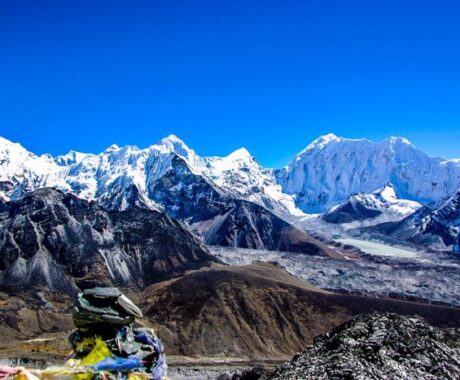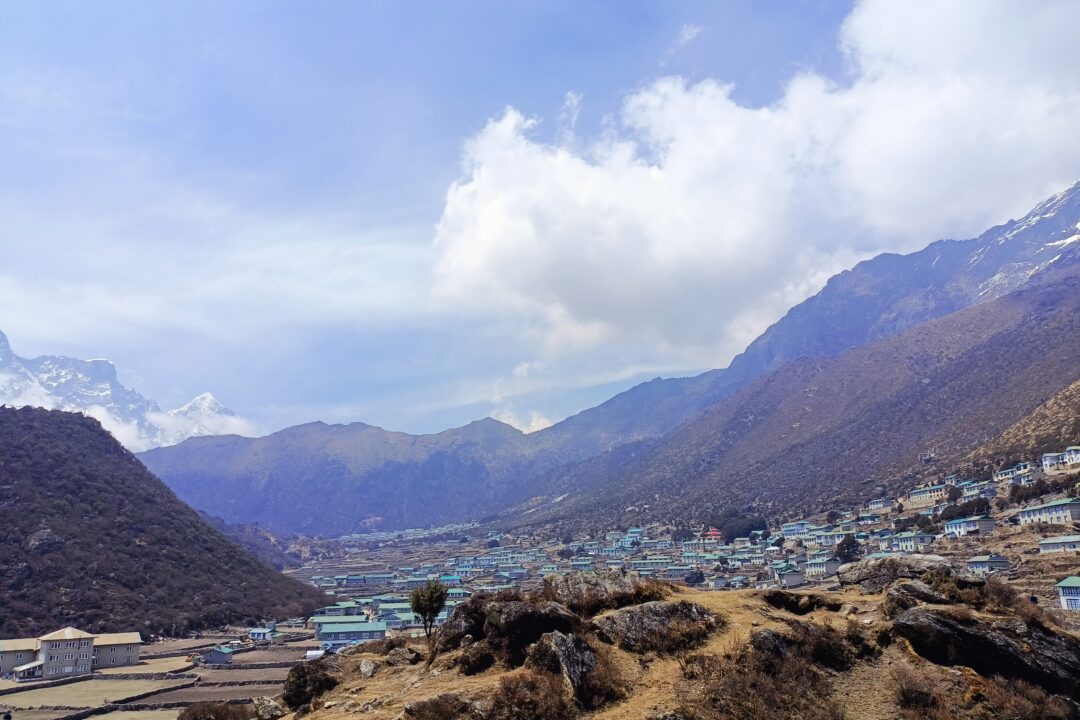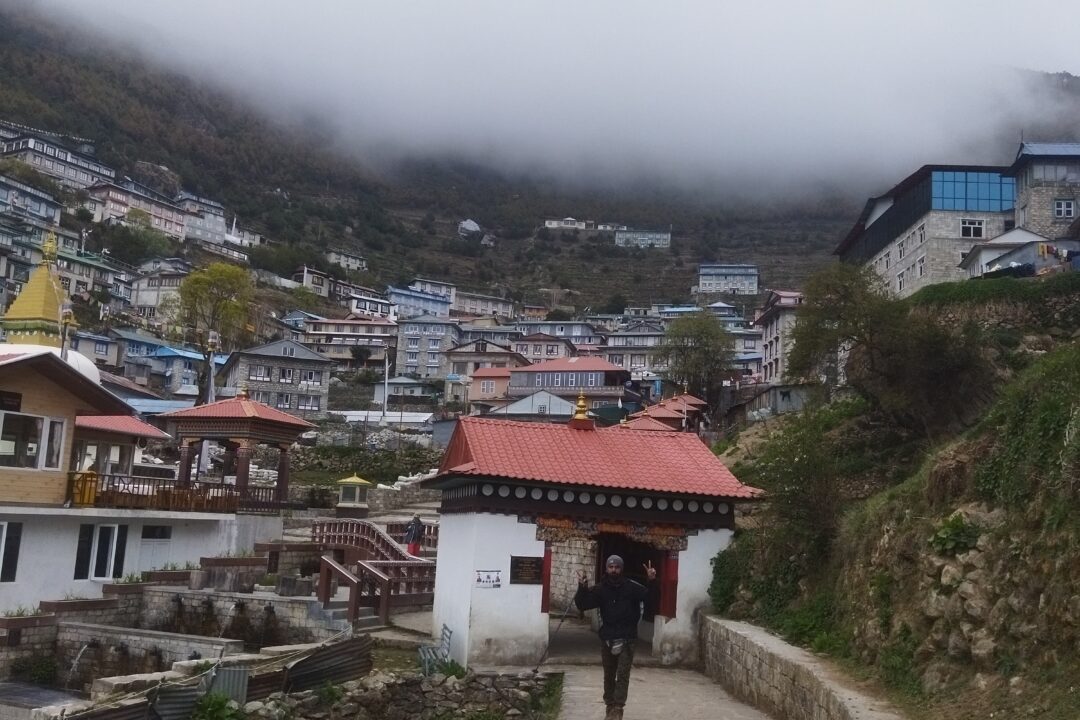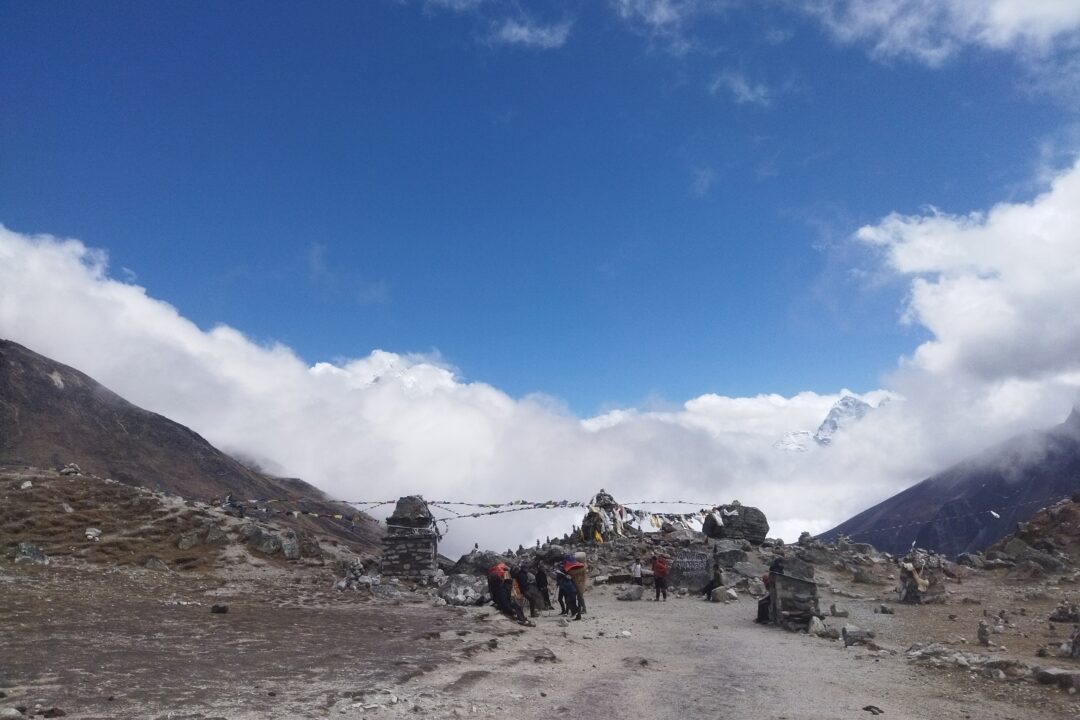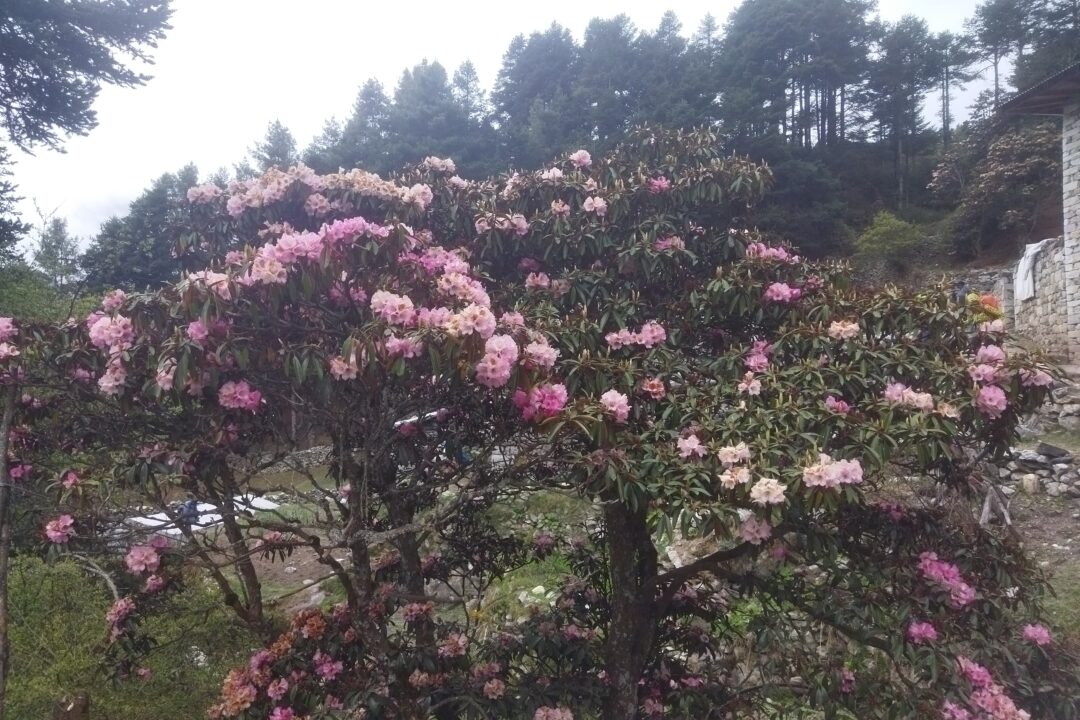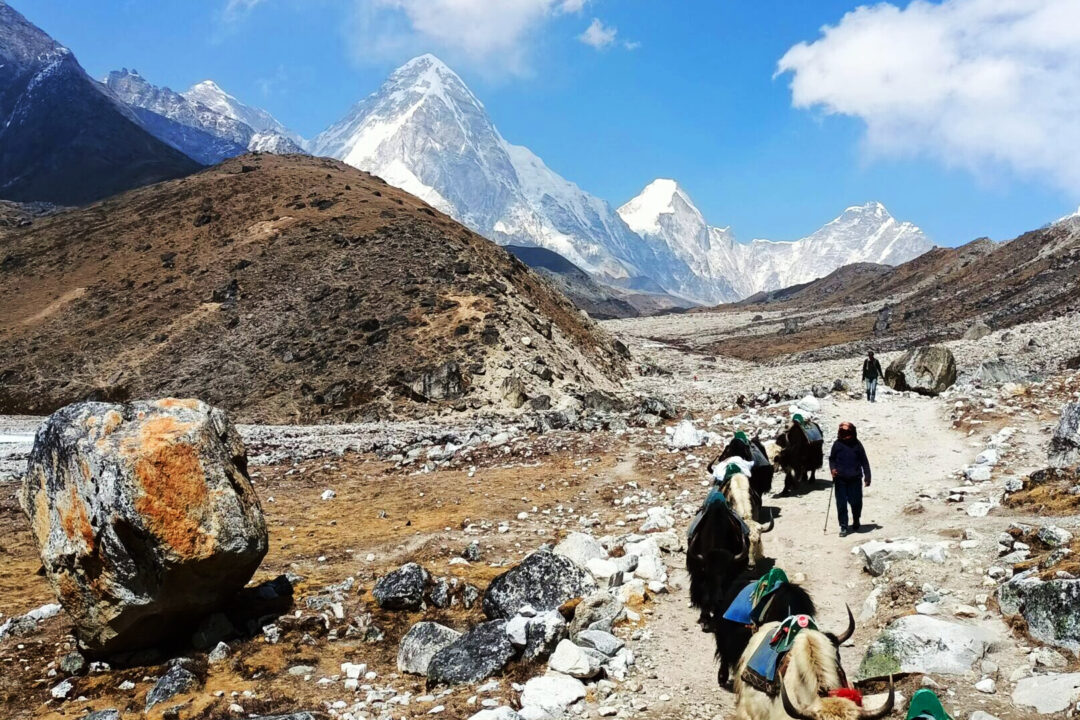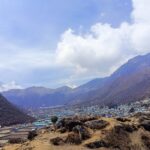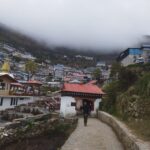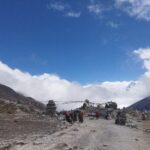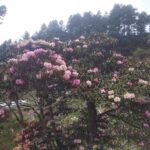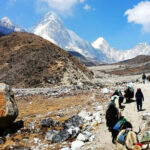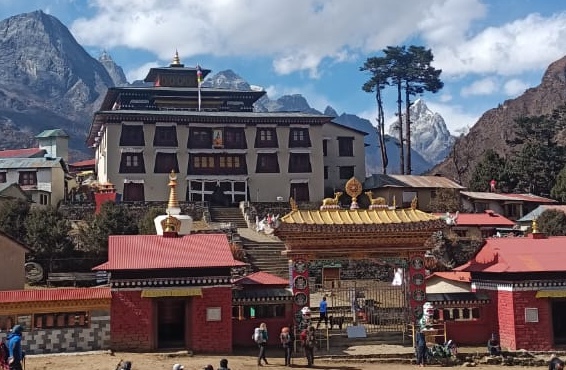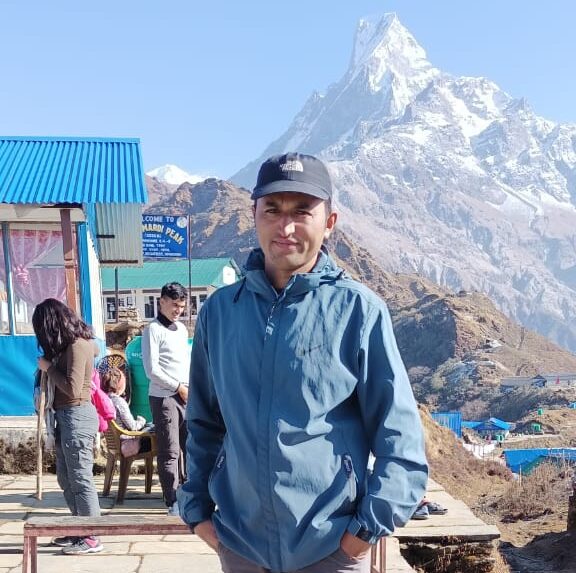Everest Base Camp Luxury Trek
Trip Facts
- Destination Everest Region Nepal
- Activity Trekking
- Duration 15 Days
- Trip Difficulty moderate
- Max. Altitude 5555m
- Best Time March to May & Sept to Dec
- Start and End Kathmandu - Kathmandu
- Meals Breakfast / Lunch / Dinner
- Accommodation 5 Star Hotel in Kathmandu, Teahouse during the trek
- Distance Lukla-EBC-Lukla(130km/80miles)
- Group Size 2 - 10
- Transportation Domestic flight (KTM-Lukla-KTM) and private vehicle (Transportation)
Trip Highlights
- An adventure of great thrills and exciting walks in the harmony of local cultures
- Sagarmatha National Park - enriched with exotic flora and fauna
- Stand in front of majestic Mt. Everest at base camp and on top Kalapathar Hill 5,555m
- Explore the impressive villages of the native Sherpa the Highlanders of Everest
- Walk from beautiful dense woods of rhododendron and pines to arctic landscapes
- Take exotic flight to Lukla
- Stunning view of 4 magnificent peaks towering above 8,000m from the sea level
- Ancient Tengboche Monastery - One of the biggest monastery in the region
- Visit world's highest airport i.e Syangboche Airport
- visit kalapathar with majestic viewpoint
Introduction
Experience the thrill, beauty, and rich culture of the Everest Base Camp Luxury Trek with RP Adventures. This trek brings you face-to-face with towering snow-capped mountains, stunning landscapes, and the vibrant culture of the Khumbu region. Known for its breathtaking scenery, Everest Base Camp and Kalapathar are among the world’s most sought-after trekking destinations.
A Journey Through Stunning Landscapes
The trek begins with an exhilarating flight to Lukla, the gateway to the high Khumbu region. From here, you embark on a journey that follows winding paths and crosses several bridges over the glacial Dudh Koshi River. The adventure unfolds through picturesque Sherpa villages, each offering unique insights into the local Buddhist culture and traditions.
Everest Base Camp Trek Highlights
Namche Bazaar: The Sherpa Capital
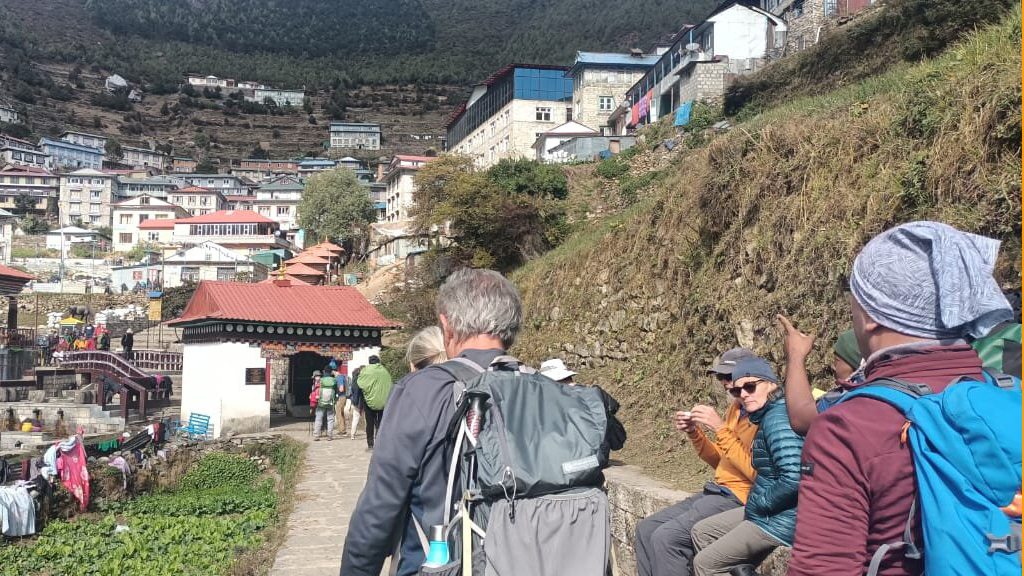
As you ascend, you’ll reach Namche Bazaar at 3,450 meters, the vibrant hub of the Khumbu region. This bustling town offers various amenities for trekkers and locals, making it an ideal spot for acclimatization. Take a rest day here to explore the local markets, visit the Sherpa museum, and soak in the stunning mountain views.
Tengboche Monastery: A Spiritual Oasis
The trail continues to Tengboche, a serene spot nestled on a plateau surrounded by snow-capped peaks. Home to the famous Tengboche Monastery, this area offers a tranquil retreat with panoramic views of Everest, Lhotse, and Ama Dablam. The monastery, with its rich history and spiritual ambiance, is a highlight of the trek.
Dingboche and Imjatse Valley: Gateway to the High Himalayas
From Tengboche, the landscape becomes more rugged as you move towards Dingboche, situated in the scenic Imjatse Valley. Here, you’ll witness stunning views of Island Peak and the North Face of Ama Dablam. Dingboche is an ideal place for acclimatization, offering short hikes to surrounding ridges with spectacular vistas.
Everest Base Camp: Standing at the Foot of Giants
The journey culminates at Everest Base Camp, located at the end of the Khumbu Valley. Although Everest itself is hidden behind the massive peaks of Lhotse and Nuptse, the experience of standing at the base of the world’s highest mountain is unparalleled. The area is filled with the remorseless fields of moraine and ice, close to the infamous Khumbu Icefall.
Kalapathar: The Pinnacle of the Trek
The final highlight of Everest Base Camp Trek is the climb to Kalapathar, a rocky ridge at 5,555 meters. This grueling ascent is rewarded with one of the most jaw-dropping panoramas of the Himalayas, including close-up views of Mt. Everest. The effort to reach the summit of Kalapathar is met with unforgettable vistas that will stay with you forever.
The Return Journey
After soaking in the incredible views and experiences, the trek descends back to Lukla, retracing your steps through the scenic landscapes and vibrant villages. A scenic flight from Lukla brings you back to Kathmandu, where the adventure concludes.
Why Trek Everest Base Camp Trek with RP Adventures?
Join us on this unforgettable trek to Everest Base Camp, where every step is filled with awe-inspiring beauty and cultural richness. Standing at an impressive 8,848.48 meters, Mount Everest is not just a mountain; it’s a symbol of adventure and human endurance. Known as Sagarmatha in Nepal and Chomolungma by the Sherpa community, Everest has been captivating adventurers since the historic first ascent by Sir Edmund Hillary and Tenzing Norgay on May 29, 1953.
With RP Adventures, you’ll experience the magic of the Himalayas in a safe, well-organized, and enriching journey. Embark on this adventure of a lifetime and create memories that will last forever.
Best Seasons for the Everest Base Camp Trek
- The best time and right seasons for a wonderful Everest Base Camp trek are spring and autumn. The spring season begins from ( March to May ) when most days are full of sunshine.
- Where wildflowers are in seasonal bloom, like the rhododendron of various species and colors, it makes the hills lively . Sometimes the afternoon can get overcast with a few showers and cold mornings and nights, altitude-wise The next best season is autumn/fall, starting from (September to November ). Most days are fine and crystal clear.
- For views and pleasant walks, but cold morning, late afternoon, and nighttime we can expect snowfall above 2,800 m sometimes. Interested people can enjoy this trek during the winter months of the Christmas and New Year holidays.
- Days are much clearer for views and walks, but very cold morning, late afternoon, and nighttime. Days are short due to limited sunlight hours, but enjoyable time for views and walks
What to Expect on Everest Base Camp Trek?
- Everest base camp and the whole of Khumbu areas are inhabited by the Sherpa, the Highlanders of Everest and Eastern Himalayas.
- The Sherpa follows Tibetan Buddhism known as Mahayana of the Niyama sect with every house adorned with prayer flags.
- The villages are lined with Buddhist monuments of Stupas and prayer wall. Enjoy walks within serene woods of tall rhododendron, pines, and fir trees
- Grand views of giant snow peaks on daily walks from Lukla to Everest base camp
- The Closest views of Mt. Everest are from the Kalapathar rocky hill, the highest point of the adventure. Enjoy the walks in the comfort of a nice cozy lodge and guest house with the warm traditional hospitality of the native Sherpa.
- A short and scenic flight both ways from Kathmandu-Lukla-Kathmandu facing a breathtaking panorama of the Himalayan Mountain range with a view of Mt. Everest
Outline Itinerary
Day 01: Arrival in Kathmandu Airport, transfer to hotel – 1,300m.
Day 02: Fly from Kathmandu to Lukla 30 Min trek to Phakding 2,610m – 03 hrs.
Day 03: Trek to Namche bazar 3,450m – 07 hrs.
Day 04: Rest day in Namche bazaar – 3,450m.
Day 05: Trek to Tengboche 3,867m – 05 hrs.
Day 06: Trek to Dingboche 4,410m – 05 hrs.
Day 07: Rest day in Dingboche for acclimatization and short excursion – 4,400m.
Day 08: Trek to Lobuche 4,960m – 05 hrs.
Day 09: Trek to Everest Base Camp 5,364 m and back to Gorakshep 5,160m – 06 hrs.
Day 10: Climb Kalapathar 5,643 m / 18,514 ft. Trek to Pangboche – 3,900m.
Day 11: Trek back to Namche Bazar 3,450m – 07 hrs.
Day 12: Trek back to Phakding 2,610m – 05 hrs.
Day 13: Trek to Lukla 2,810m – 04 hrs.
Day 14: Fly from Lukla to Kathmandu with afternoon free at leisure – 1,300m.
Day 15: International departure for homeward bound – 1,300m.
Food Options for Everest Base Camp Trek
When trekking on a high-altitude trek, the question of what to eat becomes paramount. So, when trekking to Everest Base Camp, careful consideration must be given to the available food options. Unlike other trekking trails in Nepal, you won’t be restricted to a particular set of foods rather, you’ll find a variety of dishes at the teahouses along the Everest Base Camp route. From Nepali classics to Western favorites, there’s a diverse range of meals to choose from. It’s worth noting that the menus at most teahouses offer similar selections.
Common options on teahouse menus include Thukpa, Momos, various soups, Macaroni, Spaghetti, Potato, Pizza, Sandwiches, Yak dishes, Rice, Burger, and Spring Rolls. For breakfast, you can enjoy Chapatti, Tibetan Bread, Toast with Jam or Honey, French Toast, Pancakes, and Porridge, among other options. Despite the varieties of choices, we highly recommend trying Dal Bhat (rice and curry) accompanied by fresh vegetable soup as a primary meal option.
Accommodation for Everest Base Camp Trek
During the trek, it is very important to choose a hotel to spend a night. It is really beneficial to stay in the best teahouses when you’re trekking to Everest Base Camp. Along the trail, you can find many lodges, and all of these lodges surely provide beds, blankets, and meals for tired hikers. Teahouses vary in size and facilities depending on the area. All these teahouses act as places where travelers can gather, chat, and form friendships.
When you spend a night at teahouses, it lets you experience the culture of the area because staying in teahouses is good as it helps the local economy. You can learn about life in the mountains, talk to Sherpas who work there, and try local food in the lodges where you will accommodate a night. The teahouses you choose to stay in, make your trek to Everest Base Camp more special and authentic, giving you good memories in the wonderful Himalayas.
Types of Accommodation for Everest Base Camp Trek
Tea House Accommodation
The classic form of trekking accommodation on the EBC trail is teahouse accommodation. All the tea houses are built and managed by locals. A trekker can spend their night in tea houses, which provide basic facilities. The tea houses always offer accommodation for the trekkers. The hotel owners specify the services they offer by calling their places “Hotel & Lodge.” The lodges are very comfortable, warm, and well-appointed on the trails of EBC, offering a nice, well-maintained place to stay and eat. However, it becomes more basic as you go higher.
All the rooms in lodges are twin-sharing basis, but they do not have bathrooms attached, with some basic furniture, such as a small table or a chair, shelf, and hooks for hanging clothes. Some lodges have luxurious options with better rooms and facilities where the beds are covered with mattresses, pillows, bed sheets, and blankets.
Living rooms are used for eating and relaxing, where you will find a warm environment because, in the evening, they are heated with a pot-bellied stove. Lodges are places where all the trekkers can meet and share their experiences of trekking. They are fully facilitated with hot showers if you wish to bath, leaving behind some lodges at higher altitudes. Internet connection in Khumbu is available, but good and reliable speed is not guaranteed. Electronic gadgets can be recharged in most of the lodges by paying a certain amount. It gets more expensive as you go higher, so it is highly recommended to bring power banks. Staying at the local tea house/lodge brings trekkers closer to the local lifestyle and culture.
There are two types of tea house accommodation during the EBC Trek: basic facilities tea houses and luxury lodges.
1) Basic Lodge Accommodation
In this type of accommodation, you will be provided with basic facilities such as normal beds, small room size, and a shared bathroom. However, the room is nice and cozy with clean blankets and comfortable pillows. If you want to upgrade the room, you should consult with your guide. A guide will arrange to upgrade your room, but it costs extra money, which you can pay directly in cash, but it does depend on availability. The average cost for a room is around 750 to 1000 rupees.
2) Luxury Lodge Accommodation
The luxury lodges available in Everest Base Camp cost from US dollars 50 to 200, and all of these lodges provide better facilities than basic lodge accommodation. The rooms are filled with comfortable beds, and a heater is attached in every single room. The size of the room is quite bigger than basic accommodation with an attached bathroom and hot water facilities. These luxury rooms are a bit more expensive, and there are very few tourists who book these kinds of accommodations.
3) Camping Accommodation
The other option for accommodation in Everest Base Camp Trekking is camping. Camping is generally done by an expedition team who climb a peak such as Mount Everest, Lhotse, Island peak, and many more. In camping trek, a tent is used for accommodation, sleeping, and resting. The cooking staff will prepare food for all the team members. The team members are divided according to their specialties, like porters who carry guest baggage and sherpas who show the way while climbing a peak. Different crew members are hired for different work. You will have an amazing experience if you do a camping trek in the Everest region, but due to the easy accessibility of tea houses, camping is generally avoided.
Alternative Treks Around the Everest Region
Exploring alternative treks in the Everest region offers unique experiences, often with fewer crowds and distinct cultural insights. Here are some noteworthy options:
- Gokyo Lakes Trek – 14 Days: Escape the crowds and explore serene turquoise lakes with stunning Everest views — perfect for nature lovers and photographers.
- Everest Panorama Trek – 9 Days: Experience Everest’s grandeur from iconic viewpoints, with a short and easy trek that’s ideal for beginners or families.
- Everest Base Camp Helicopter Tour 1 Day: Fly to Everest Base Camp in a day — an unforgettable luxury experience for those short on time but seeking epic views.
- Island Peak & Everest Base Camp Trek 19 Days: For those seeking more adventure, add a thrilling climb to Island Peak while soaking in Everest’s beauty — a perfect combo for climbers.
Detailed Itinerary
-
Day 01: Arrival in Kathmandu Airport, transfer to hotel 1,300m - 30 Min
Upon arrival at Kathmandu's Tribhuvan International Airport, please check the Nepal Standard Time, which is 5 hours and 45 minutes ahead of GMT. Outside the airport terminal, our RP Adventures staff will warmly greet and assist you for a short drive to your hotel. Situated in the heart of Kathmandu, upon arrival, settle into your delightful rooms. Later, join fellow trekkers for a briefing on the Everest Base Camp & Kalapathar Hill Trek. After gathering all necessary information and trek details, enjoy an evening group welcome dinner at an authentic Nepali restaurant, where you'll be introduced to Nepali cuisine and culture.
Altitude: 1300mMeals: BreakfastAccommodation: 3 star hotel in Kathmandu -
Day 02: Fly from Kathmandu to Lukla - 30 Min trek to Phakding 2,610m - 03 hrs
In the early morning, prepare for a short flight to Lukla. Depart from the hotel and board the small aircraft. As the plane ascends, enjoy breathtaking views of the Himalayan peaks and the panoramic vista of the Kathmandu Valley. After a brief flight, touchdown on the unique runway of Lukla Tenzing & Hillary Airport. Upon arrival in Lukla, take some time for a refreshing break before embarking on a pleasant walk downhill, following the Dudh Koshi River. The trek continues past several villages until reaching Phakding, where you'll spend the night. Phakding is situated in a gorge next to the Dudh Koshi River.
Altitude: 2610mMeals: Breakfast / lunch / DinnerAccommodation: Tea house -
Day 03: Trek to Namche bazaar 3,450m - 07 hrs
The journey from Phakding to the renowned Namche Bazaar is a full day's walk, spanning approximately 6 hours. While the distance isn't considerable, the gradual gain in altitude necessitates a slower pace. The trail leads across a lengthy bridge to Monjo village, marking the entrance to Sagarmatha National Park. Beyond the park, a leisurely path leads to another bridge at Jorsalle, the final settlement before Namche Bazaar. After stopping for lunch at Jorsalle, the afternoon trek involves ascending to a high bridge and navigating undulating, winding trails that eventually lead to Namche Bazaar, where you'll spend two nights.
Altitude: 3450mMeals: Breakfast / lunch / DinnerAccommodation: Tea house -
Day 04: Rest day in Namche bazaar - 3,450m
A perfect spot and height for acclimatization, enjoy the day taking short hikes to the viewpoints. There is a nice museum to collect information on Khumbu Sherpa history and cultures, as well as flora, fauna, and mountaineering history. The high ridge offers grand views of Mt. Everest with adjoining famous peaks. Energetic people can hike to the Everest View Hotel, a climb of a few hours, a great place for views of Everest while enjoying a cup of warm refreshment. The rest of the afternoon, relax and explore Namche Bazaar's main streets, lined with shops, stores, restaurants, and bakeries, with fancy hotels and lodges.
Altitude: 3450mMeals: Breakfast / lunch / DinnerAccommodation: Tea house -
Day 05: Trek to Tengboche 3,900m - 06 hrs
The adventure continues from Namche Bazaar, heading on a higher trail and facing tremendous mountain scenery. The walk leads on a winding scenic path down to Phunki Tenga for lunch. In the afternoon, a few hours' climb in the cool shade of pine and rhododendron forest reaches Tengboche and its monastery. At Tengboche, visit the monastery for a tour of cultural and religious interest, along with a panorama of Everest, Lhotse, and Nuptse. This includes views of Ama Dablam with a range of snow-clad peaks that surround Tengboche and its colorful monastery. Stay overnight at Tengboche in a nice lodge with views of the Himalayan peaks.
Altitude: 3900mMeals: Breakfast / lunch / DinnerAccommodation: Tea house -
Day 06: Trek to Dingboche 4,410m - 05 hrs
Enjoy a pleasant overnight stay in Tengboche with an interesting visit to the monastery, and then start the morning walk heading downhill. After crossing a bridge, there is a slow climb to Pangboche, the last village before Everest Base Camp. The other places en route are temporary settlements, such as Dingboche, Lobuche, and Gorakshep. From Pangboche, the walk heads higher. Walking on open and exposed terrain, the day finally ends upon reaching Imjatse Valley, where Dingboche is situated. This is a lovely settlement beneath the towering North Face of Ama Dablam, with views of Island Peak, Lhotse, and Nuptse. At Dingboche, transfer to a nice lodge and take time to marvel at the beautiful scenery of the surrounding giant peaks.
Altitude: 4410mMeals: Breakfast / lunch / DinnerAccommodation: Tea house -
Day 07: Rest day in Dingboche for acclimatization and short excursion - 4,410m
Another rest day for acclimatization before heading towards our final destination at Everest Base Camp and the climb of Kalapathar. Enjoy the morning taking a scenic hike up to the hill of Nakarjung for spectacular surrounding mountain views. Besides Lhotse, Nuptse, and Ama Dablam, get a close look at the famous Island Peak and Mt. Makalu towards the east. For the rest of the day, enjoy a leisurely afternoon in the harmony of the glorious mountain range..
Altitude: 4410mMeals: Breakfast / lunch / DinnerAccommodation: Tea house -
Day 08: Trek to Lobuche 4,900m - 05 hrs
From Dingboche, the adventure continues heading up with a slow, gradual climb to Thukla, where the trail of Dingboche and Pheriche joins towards Lobuche and Everest Base Camp, an ideal place for a lunch stop. The afternoon leads to a steep climb of less than an hour to Thukla Pass and a ridge top. This small flat area is lined with memorials of unfortunate climbers and famous late mountaineers. The walk continues on a gentle incline up to Lobuche for an overnight halt, located on a corner of a wide valley.
Altitude: 4900mMeals: Breakfast / lunch / DinnerAccommodation: Tea house -
Day 09: Trek to Everest Base Camp 5,364 m and back to Gorakshep 5,160m - 06 hrs
Today's adventure leads to our dream destination: Everest Base Camp. Rising early for a long day, we have breakfast and then follow the trail north with a short, steep climb over the moraine of rocks and ice above the Khumbu glacier. After a short descent, we reach Gorakshep, a place with several nice lodges located beneath Mt. Pumori and Kalapathar Hill. After a short rest, we continue walking east on a rocky path towards Everest Base Camp. Finally, we reach the base camp at the foot of the towering Mt. Everest, Lhotse, and Nuptse. Enjoy the awesome, dramatic scenery of arctic-like landscapes filled with rocky moraine, ice, and snow. This includes close views of the massive Khumbu Icefall just above the base camp. After this wonderful experience, we head back to Gorakshep for the night, preparing for the last steep climb to the top of Kalapathar Hill.
Altitude: 5180mMeals: Breakfast / lunch / DinnerAccommodation: Tea house -
Day 10: Climb Kalapathar 5,643 m / 18,514 ft -Trek to Pangboche 3,900m - 09 hrs
Another early morning start for the big climb to the top of Kalapathar, a few hours up. The climb rewards you with stupendous panoramic views of the surrounding towering mountain range, with Mt. Everest at a close distance. After a mesmerizing adventure overlooking breathtaking scenery, descend downhill to Gorakshep and continue walking down towards Pheriche Valley, past Lobuche. After a refreshing stop at Pheriche for lunch, continue the afternoon walk with gradual descents and ascents to a small ridge top. From the top, descend downhill to Pangboche village for an overnight stop in a nice, cozy lodge with views of Ama Dablam.
Altitude: 4000mMeals: Breakfast / lunch / DinnerAccommodation: Tea house -
Day 11: Trek back to Namche Bazaar 3,450m - 05 hrs
In the morning, facing majestic views of Mt. Ama Dablam, we find Pangboche located on the main route to the Ama Dablam Base Camp. From Pangboche, descend to the Imjatse River and then climb for an hour more to Tengboche. Enjoy the magnificent views of the surrounding mountain scenery, then descend downhill to the river at Phunki Tenga. A short ascent reaches Shanasha village, and then we continue to Kyang-Jima, a small, pleasant settlement with a few good lodges. Stay overnight in this peaceful location facing grand views of Everest, Ama Dablam, and Thamserku peaks.
Altitude: 3450mMeals: Breakfast / lunch /DinnerAccommodation: Tea house -
Day 12; Trek back to Phakding 2,610m - 05 hrs
Enjoy the morning's spectacular views of snow peaks, and then start walking on the pleasant scenic trail to Namche Bazaar. Have lunch at Namche, and after a refreshing rest, continue walking down to the Dudh Koshi River Valley. After a good walk, end the day by reaching Monjo for an overnight stop before Lukla.
Altitude: 2610mMeals: Breakfast / lunch / DinnerAccommodation: Tea house -
Day 13: Trek to Lukla 2,810m - 04 hrs
Slowly the adventure comes to an end. Enjoy the last day's walk to Lukla following a nice, pleasant trail. Head past Phakding and then make the final climb to Lukla by lunchtime, as well as for the last night's dinner. After an exciting and marvelous adventure around the high Khumbu to Everest Base Camp.
Altitude: 2810mMeals: Breakfast / lunch / DinnerAccommodation: Tea house -
Day 14: Fly from Lukla to Kathmandu with afternoon free at leisure - 1,300m
An early start to catch the flight back to Kathmandu. After breakfast, take a short walk to Lukla’s Tenzing & Hillary Airport. As the plane arrives from Kathmandu, board a smaller aircraft for the sweeping flight to Kathmandu. Upon reaching Kathmandu Airport's domestic terminal, transfer back to your hotel. Enjoy a free afternoon for individual activities.
Altitude: 1300mMeals: BreakfastAccommodation: 3 star hotel in Kathmandu -
Day 15: International departure for homeward bound - 1,300m
On the final day in Kathmandu and in Nepal, you'll prepare for your international flight. RP Adventures guides and staff will transfer you to the airport, where you'll bid farewell to them. Then, proceed to the airport terminal for your homeward-bound flight, reflecting on the memorable and exciting adventure of the Everest Base Camp & Kalapathar Hill Trekking.
Altitude: 1300mMeals: Breakfast
What's included
- Airport Transfers: Pick up and drop
- Accommodation in Kathmandu: 5 Star Hotel accommodation in Kathmandu (with breakfast included)
- Guide: An Experience English speaking guide and porter (1 porter for every 2 trekkers)
- Meals: All Meals, Tea and Coffee during the trek
- Teahouse accommodation: Teahouse accommodation during the trek with attached room with electric blanket ( Possible place like Lukla, Namche, Deboche, Dingboche and Lobuche) except Gorakshep (electric blacket)
- Sightseeing: Kathmandu Valley Sightseeing with private jeep and tour guide (Local Monuments entrance fee included)
- Domestic flights: Kathmandu to Lukla Flight Ticket (Round Trip)
- Permits: All required trekking permits (National Park Entry Fee and Pasang Lhamu Rural Municipality Entry Fee)
- Guide and porter insurance with food and accommodation
- Basic Medical kits
- Sleeping and duffel bag, down jacket, trekking poles (should be returned after the trek)
- Farewell dinner
- Emergency Helicopter Evacuation Service Arrangement Only (should cover by your travel insurance)
- All required paper works and government taxes
- RP Adventures T-shirt.
What's not included
- International Flight
- Nepal Travel Visa Fee
- Personal Medical and Travel insurance (Should cover helicopter evacuation)
- Sharing Helicopter/Charter Helicopter Service
- Guide, Porter and Driver tips
- Personal Gears (equipment)
- Personal bill
- Lunch and Dinner in Kathmandu
- All other personal expense of beverages (hard and soft drinks)
- All other things not mentioned in the inclusion
Trekking Gears
What to pack for Everest Base Camp Trek?
Before embarking on the Everest Base Camp Trek, it is crucial to meticulously pack the necessary clothing and gear, while also acquiring general knowledge about the trekking areas. As is well-known, the majority of trekking routes in Nepal commence from the subtropical region and ascend through the sub-alpine zone, eventually reaching the alpine zone above 4000m.
To ensure a safe and comfortable trek in the Everest Base Camp Trek, it is highly recommended to bring the appropriate equipment and gear to cope with the cold temperatures. So read our article a complete packing list for Everest Base Camp Trek to get the detailed information regarding it.
The following basic checklist for trekking and hiking equipment should assist you in packing for our trips. Keep in mind the importance of minimizing the weight of your clothing and gear. Your packed trek bag should weigh less than 15 kilograms. Remember, this is merely a guideline and not everything listed is essential to bring.
- Lightweight thermal gloves
- Hiking boots
- 2 pairs of thin and 2 pair of thick woolen socks.
- Trekking trousers
- Waterproof (trousers / jacket)
- Base layer shirts
- Underwear (4)
- Sun hat or scarf
- Thin, lightweight (inner socks) (4)
- Head lamp ,spare bulbs, & batteries
- Small padlock to lock trek bag
- Plastic bags - for keeping items dry inside trek bag
- Small wash towel
- Basic First Aid Kit
- Sun protection (including total bloc for lips)
- Trekking poles
- Down jacket
- Water bottle 1 liters
- Hand wash
- Snow glasses and sunglasses
- Duffle bag or kit bag to carry to gear while trekking.
Additional Equipment Checklist
- Headband or Beanie
- Swiss army knife
- Lip guard
- Sun lotion
- Scarf or neck Band
- Rain jacket/ Umbrella
Map
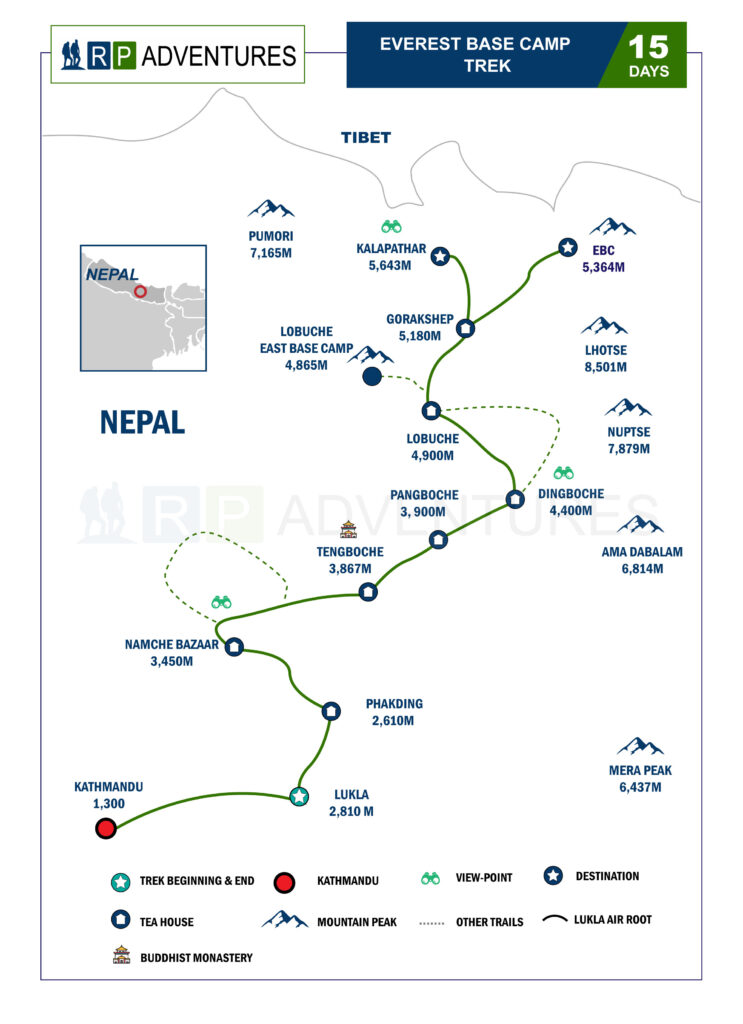
FAQs of Everest Base Camp Luxury Trek
-
What is the total mileage we cover on the Everest Base Camp Trek?
The distance from Lukla to Everest Base Camp is approximately 60 to 65 km (37 to 41 miles) one way. The total round-trip distance from Lukla, excluding side walks or hikes on rest days, will be 120 to 130 km (74 to 82 miles). -
Is Everest Base Camp a busy route?
Yes, it is a busy route during the trekking season (March - May and Sep - Nov). Everest Base Camp is a popular and famous adventurous treks around the whole Himalayas due to its stunning scenery of world’s highest peaks. Everest and Khumbu is a dream adventure destination, thousands of trekkers, adventurer and mountaineers visits every seasons of the year. -
Is high altitude a problem on Everest base camp trek?
Yes, high altitude can pose challenges on the Everest Base Camp trek, leading to symptoms like altitude sickness. Proper acclimatization, hydration, and gradual ascent are crucial for minimizing the risks associated with high altitude. -
How are lodge, foods and facilities of charging electronic items during the Everest Base Camp Trek?
The lodge accommodations after Namche Bazaar are simple and basic, featuring common toilet and shower rooms. The food options are excellent, with menus offering Continental, Chinese, Indian, and Nepali meals. Some lodge restaurants also serve Korean, Japanese, Italian, or Mexican cuisine. For charging electronic gadgets, most lodges have electricity powered by small hydro plants after Tengboche and Pangboche. From Dingboche onwards, many lodges use solar power. Guests can charge their devices for an additional fee. -
How hard is it to do the EBC Trek and how do we prepare it physically and mentally?
It is the most demanding aspect of the trek is altitude, as the highest point you'll reach is 5,364 meters. Proper acclimatization at higher altitudes is crucial to avoid AMS (Acute Mountain Sickness). Knowledge about the trek helps manage the challenge of altitude sickness effectively. Physically, being in good condition is essential for the trek. It's recommended to engage in resistance training to prepare. A full-body strength training session 1-2 times a week, either at a gym or at home, is beneficial. Given the amount of walking involved in the trek, focusing on leg exercises is particularly advisable. -
What is the best time period to do the EBC Trek and what is it's success rate?
The best time for the Everest Base Camp trek is usually from March to May or September to November due to favorable weather conditions. It is estimated that over 95% of hikers have reach the base camp and return based on our experience, but there are no official data on success rates for hikers to the EBC. The data based on our experience should serve as a confidence booster. Proper physical stamina helps to complete the trek successfully. -
Is it worth to do the EBC trek?
Yes, it is. worth doing the Everest Base Camp trek as it is the highest base camp of the world and Everest Base Camp Trek is the most popular trek in the world. You will be at an altitude of 5,364 m from the sea level at base camp. The EBC trek provides you a most exhilarating and memorable experience of all. We and our team i.e. guide, porter will help you to complete your trek successfully with excellent services and hospitality. -
Does the Everest Base Camp Trek open during the winter and summer season?
Yes, it will be open in both seasons, but there were fewer trekkers. -
What documents are required to do this trek?
You need a valid passport, a passport-sized photo, a local permit, and the Sagarmatha National Park permit. It is suggested to carry Nepalese cash (Rupees). -
Can solo trekkers do the Everest Base Camp Trek?
Yes, solo to hundred people can do trek at the same time. -
Can we fly a drone at the Sagarmatha National Park and the EBC?
Normally, no, but in some cases, we obtain permission from civil aviation in Kathmandu and acquire a permit to fly a drone. -
How do Khumbu people transfer food and other goods?
In the upper Khumbu area, transport is normally done by helicopter or plane. In some cases, donkeys, yaks, and people carry food and goods. -
How to go the Everest Base Camp Trek?
We can use local transportation, a private jeep, a normal flight, or a helicopter tour depending on your budget and time. -
How much does it cost for the Everest Base Camp Trek?
EBC trek normal cost ranging from $1200 up to $6000, depending on your choice, time, and budget. -
What types of animals can be seen during the trek?
We can see goats, cows, yaks, nyaks, blue sheep, monkeys, musk deer, and many more. -
What types of flora can be found in this region?
The Everest Base Camp (EBC) region exhibits a variety of flora due to its diverse altitudinal zones. In the lower elevations, you can find lush vegetation including rhododendron, pine, oak, and bamboo forests. As you ascend, the landscape transitions to alpine meadows with hardy plants such as juniper and dwarf shrubs. At higher elevations, beyond the tree line, the vegetation becomes sparse, giving way to alpine plants and mosses adapted to the harsh mountain environment. The region is also known for its unique and hardy wildflowers that manage to bloom in the extreme conditions of the Himalayas. -
What will the temperature be during autumn and spring in the Everest Base Camp Trek?
During the autumn like september to half of december, from namche to the EBC the temperature will be started from 10 degree up to -15 degree. Same like autumn (March to half of june) temperature will be starting from 15 degree up to -10 deg. -
Who are the origin people of this region?
One of the world climbing groups is called Sherpa, and they originally live in this region. Nowadays, Rai, Magar, Limbu, and Tamang people also live in this area. -
What type of lifestyle people live in this region?
Normally, 60% of people work in the tourism field, such as porters, guides, tea house owners, and agency owners, depending on it. The rest of the people work in agricultural farms. The people of this region follows the Tibetan Buddhism and maintain a close-knit communities with Tibet. -
How much tips need to be given to the guide and porter?
Normally, different organizations have different rules. In our organization, we advise allocating 10% of your full package for the guide and 5% for the porter. -
Why RP Adventures is different than others agency?
RP Adventures offers an exclusive and high-end trekking experience with its expensive packages. The allure lies in the luxurious accommodations, highly qualified and experienced guides with excellent educational and medical training, ensuring a safe and enriching journey. Private ground transportation adds to the comfort, while the option of helicopter sharing for aerial transport, especially in remote areas, enhances the adventure. The commitment to quality services and safety justifies the elevated cost, providing clients with a truly premium and unforgettable trekking and tour experience. -
Do you have a budget package for the EBC trek?
Yes, we offer budget packages for trekking that allow you to choose your own meals while the trekking routes and permits remain the same. The level of service, including accommodations, food, and guide/porters, varies based on your budget. You can opt for accommodation ranging from 2-star to 5-star hotels, providing flexibility and affordability for your trekking adventure.
What Our Travellers' Say about Everest Base Camp Luxury Trek

Rajan, our beloved guide.
I would like to share my experience with Rajan, our guide. Such a nice human, always smiling, so kind, friendly and loving. He took very good care of us all. He arranged everything so organized and on time. I look forward to doing more treks with him in the future.
Selva
Gujarat, India 2023-06-03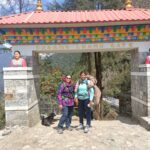
Best guide for EBC
Went to EBC in April 2023. Rajan was our guide and took good care of us. He has extensive knowledge and experience on this hike.
He made sure we ate well, slept on time and doing our breathing exercises everyday. I was walking very slow took a lot of breaks but he was always positive and never encouraged to not give up.
This is a very hard terrain and this trek was only possible with his support and guidance.
Anita Gutta
Dallas, Texas 2023-05-13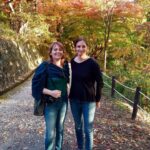
EBC / Gokyo Lakes and Kanchenjunga North/South Basecamp
Two years ago I have been with Rajan on the EBC/ Gokyo Lakes and afterwards on the Kanchenjunga North- and South basecamp Trek, which was one of the most beautiful treks I have ever done! I had an amazing time and that as well thanks to Rajan, who has organized the whole trip.
Everything was very well planned and even if there would be a need to re-plan or some difficulties along the way, he solved them straight away. He is very patient and has a great knowledge about the mountains. Definitely a guide to trust and I highly recommend taking a tour with him.
Anja Leimpek
Germany 2023-02-27Trip You May Like
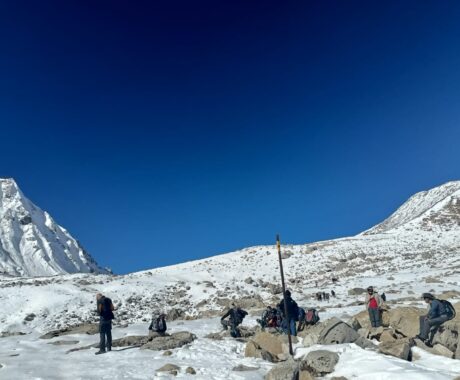
Tsum Valley & Manaslu Circuit Trek
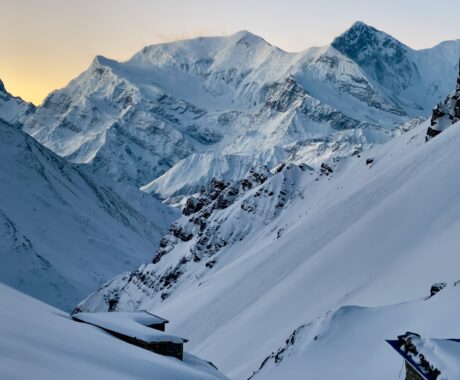
Short Annapurna Circuit Trek
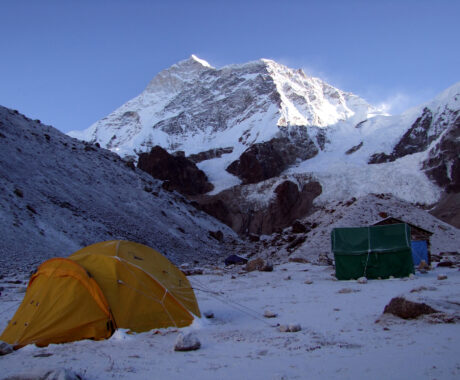
Makalu Base Camp Trek
